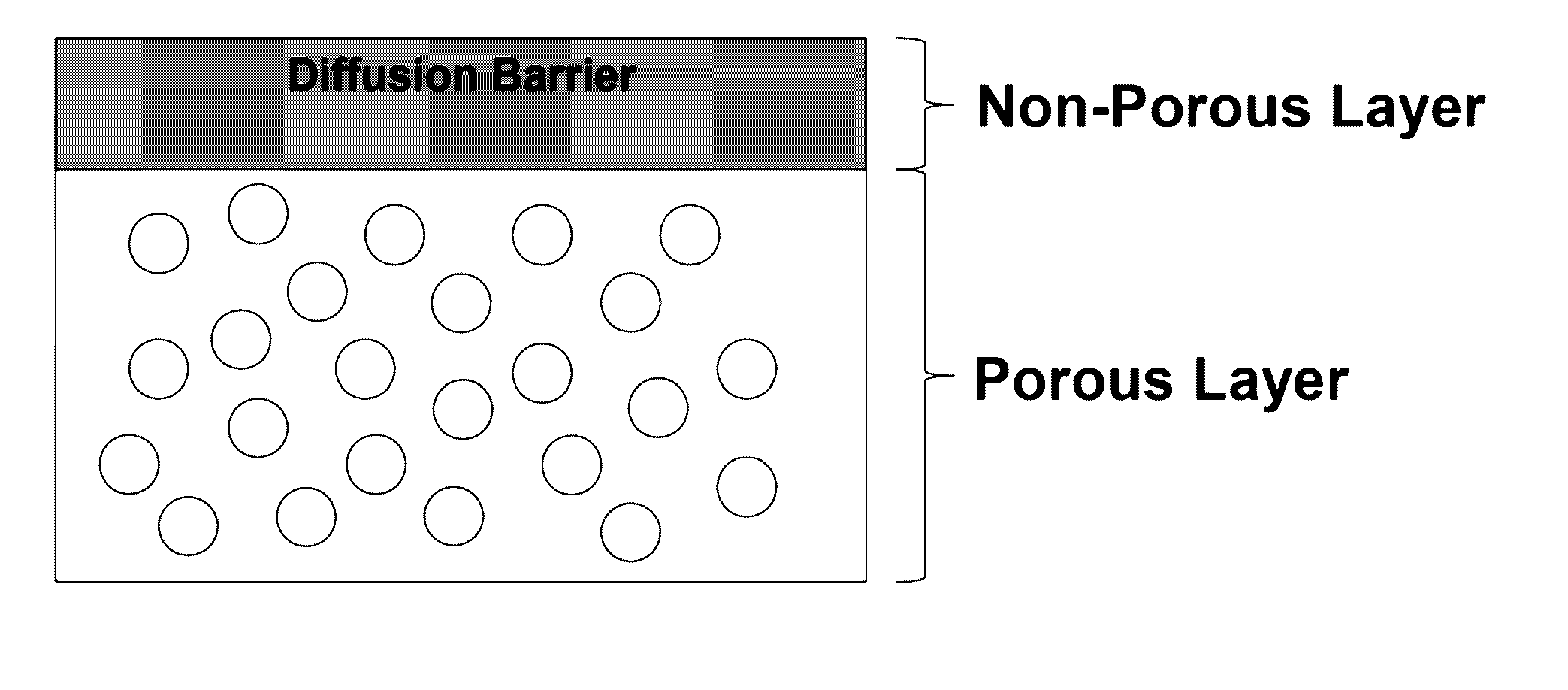Polishing pad with porous interface and solid core, and related apparatus and methods
a technology of porous interface and solid core, applied in the direction of lapping tools, manufacturing tools, lapping machines, etc., can solve the problems of low removal rate, high removal rate of polishing pads made of hard materials, and many scratches
- Summary
- Abstract
- Description
- Claims
- Application Information
AI Technical Summary
Benefits of technology
Problems solved by technology
Method used
Image
Examples
example 1
[0052]This example illustrates the preparation of inventive polishing pads (polishing pads 1A-1D) and comparative polishing pads (polishing pads 1E-1T). The scanning electron micrographs (SEMs) depicted by the lettering (a)-(t) in FIG. 5 correspond to polishing pads 1A-1T, respectively, in this example. All of the polishing pads were prepared from an extruded thermoplastic polyurethane (TPU) having a hardness of 60D on the Shore D hardness scale as measured according to ASTM D22400-00. The description below relative to inventive polishing pads 1A-1D illustrates process conditions that favor the formation of solid core-porous interface dual morphology using gassing temperature and saturation time as control variables in accordance with embodiments of the invention. In contrast, the description relative to comparative polishing pads 1E-1J illustrate conditions that do not favor the formation of solid core-porous interface morphology, and the description relative to comparative polishi...
example 2
[0060]This example illustrates the preparation of inventive polishing pads (polishing pads 2A-2F) and comparative polishing pads (polishing pads 2G-2T). The scanning electron micrographs (SEMs) depicted by the lettering (a)-(t) in FIG. 6 correspond to polishing pads 2A-2T, respectively, in this example. All of the polishing pads were prepared from an extruded thermoplastic polyurethane (TPU) having a hardness of 60D on the Shore D hardness scale, as measured according to ASTM D22400-00. The description below relative to inventive polishing pads 2A-2F illustrates process conditions that favor the formation of a solid core-porous interface dual morphology using gassing temperature and saturation time as control variables in accordance with embodiments of the invention. In contrast, the description relative to comparative polishing pads 2G-2I illustrates conditions that do not favor the formation of a solid core-porous interface morphology, and the description relative to comparative p...
PUM
| Property | Measurement | Unit |
|---|---|---|
| temperature | aaaaa | aaaaa |
| pressure | aaaaa | aaaaa |
| temperature | aaaaa | aaaaa |
Abstract
Description
Claims
Application Information
 Login to View More
Login to View More - R&D
- Intellectual Property
- Life Sciences
- Materials
- Tech Scout
- Unparalleled Data Quality
- Higher Quality Content
- 60% Fewer Hallucinations
Browse by: Latest US Patents, China's latest patents, Technical Efficacy Thesaurus, Application Domain, Technology Topic, Popular Technical Reports.
© 2025 PatSnap. All rights reserved.Legal|Privacy policy|Modern Slavery Act Transparency Statement|Sitemap|About US| Contact US: help@patsnap.com



